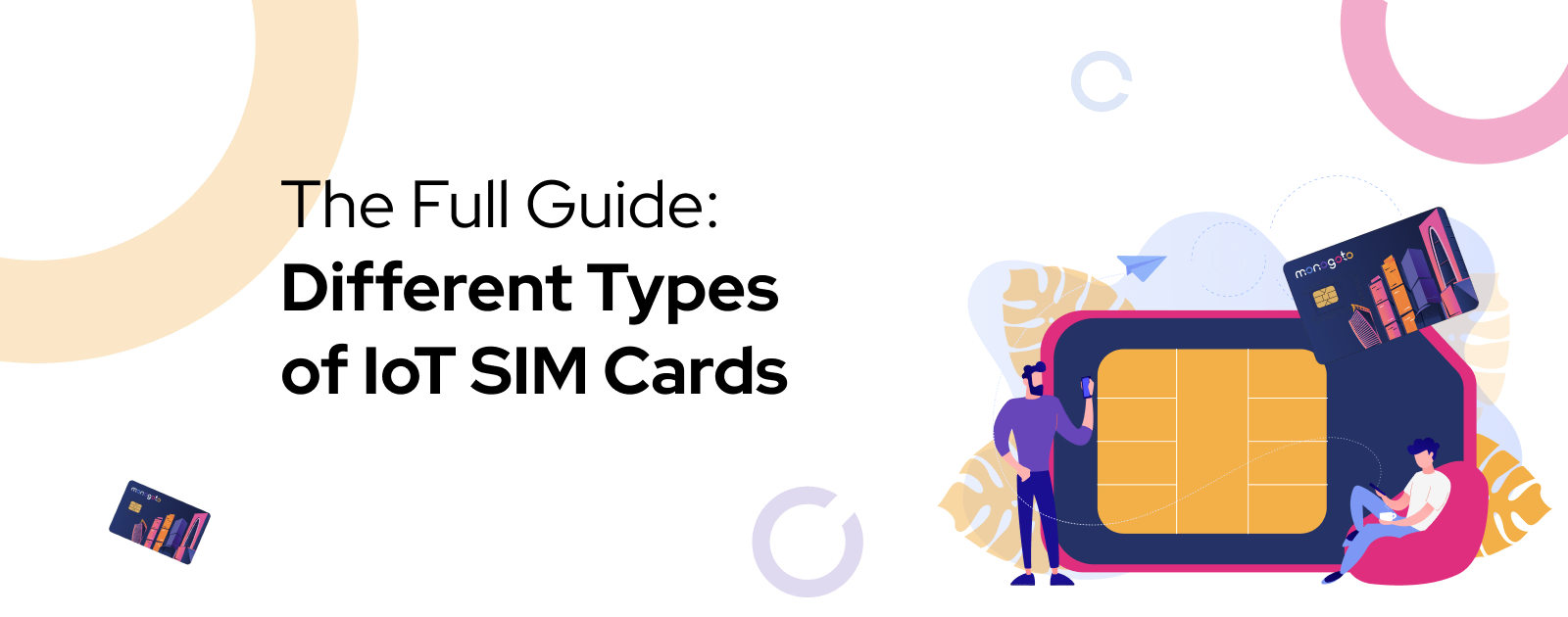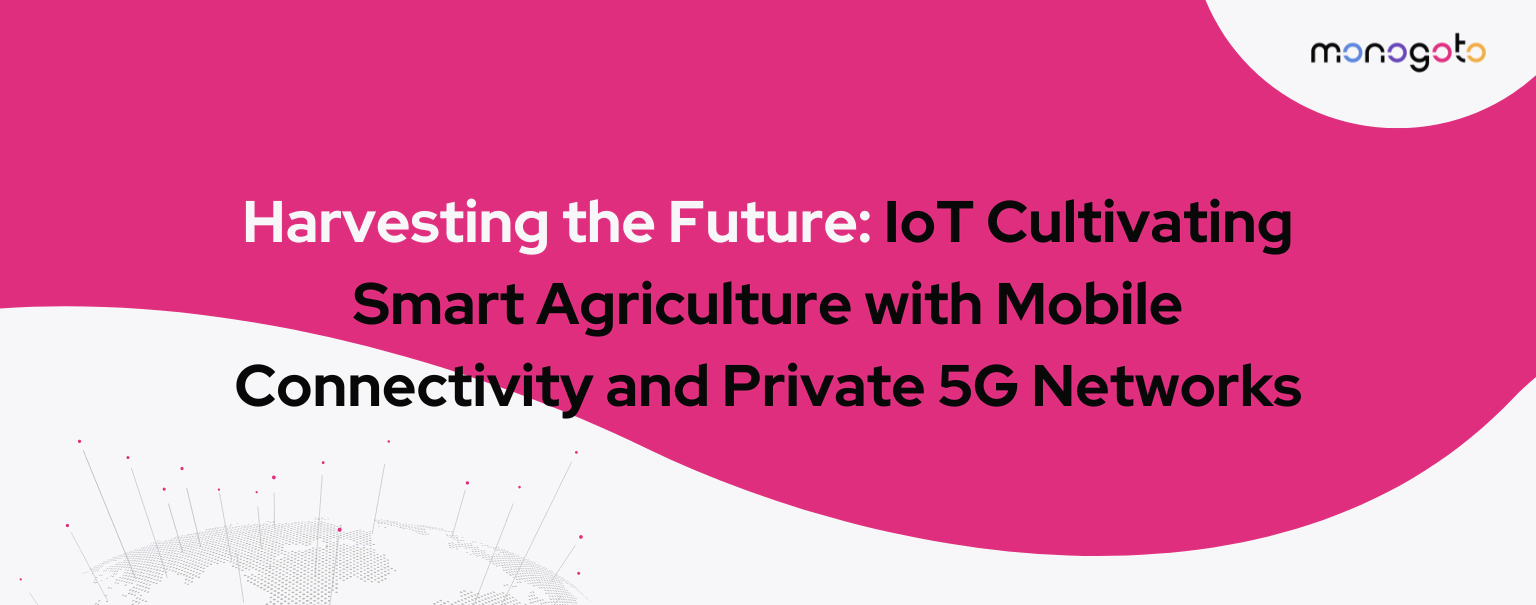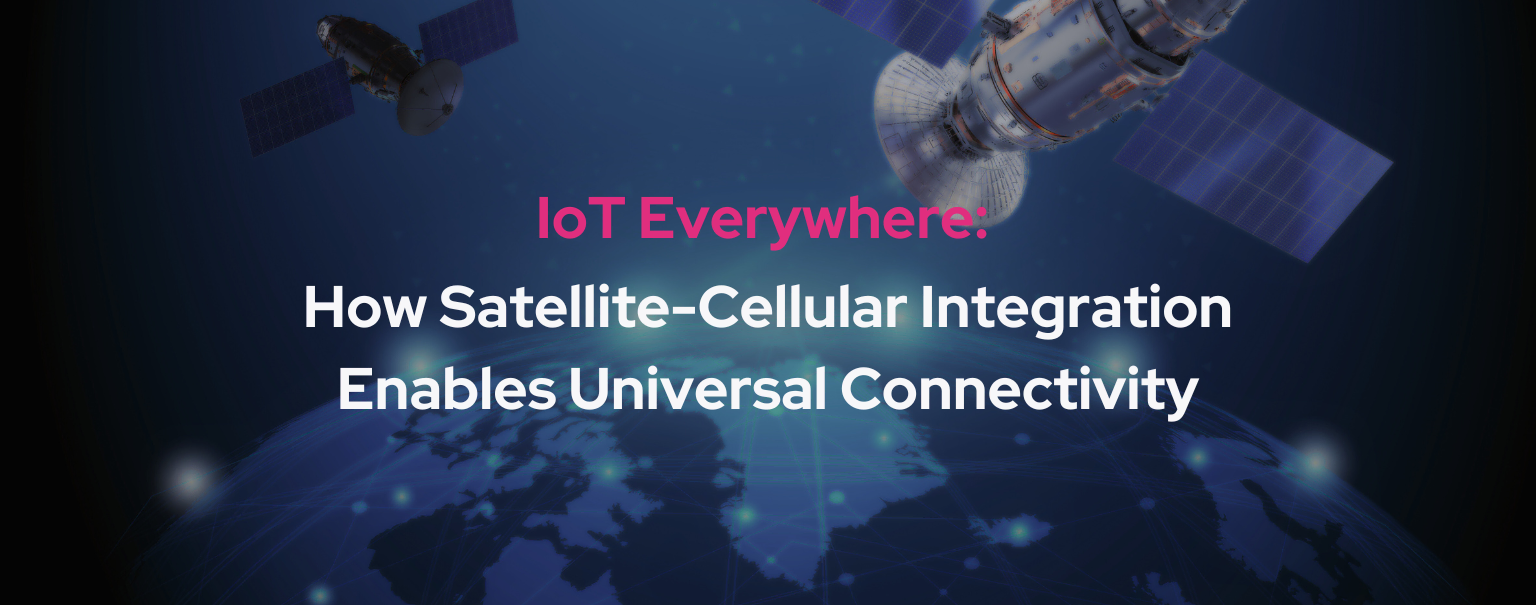Cellular connectivity is the perfect choice of wireless technology to connect your Internet of Things (IoT) devices, especially if those devices move between cities and countries or are deployed in remote environments. A plethora of codes, numbers and acronyms provide the necessary cellular identifiers to help deliver these connections and our previous article What is an ICCID number? demystified many of these.
A cellular connection comes hand-in-hand with the Subscriber Identity Module, or SIM (as we all know from our personal devices). SIMs come in a range of types and sizes, with different functionality and capabilities so the choice of SIM for your IoT device depends on where and how they will be used, and their overall design. We’ll compare IoT SIMs with consumer SIMs, describe the different types of IoT SIMs available today, and consider which is most suitable for different connectivity requirements. We’ll also cover the latest SIM technology, including the iSIM – which is SIM functionality built into the overall device and eSIM which is a form of programmable SIM card that is embedded directly into a device.
IoT SIMs vs Consumer SIM
On the one hand, the difference between an IoT SIM and a consumer SIM is minimal. They both serve the same purpose of authenticating the device (whether that is an iPhone or an e-scooter) on a cellular network so that the mobile device can consume network services that someone will pay for.
Why are IoT SIM cards different then? The big difference is that IoT SIMs nowadays uses mostly for data service and in some scenarios also SMS to communicate with the device. Whereas consumer SIMs are used for voice, data and SMS. IoT SIMs also require a specific IoT SIM card plan to fit for example for 300,000 animal trackers which consume 1MB/month. They also typically can store more information in their memory and are designed to last for a decade or longer.
IoT devices may be deployed in harsh environments, so IoT SIMs need to be durable and be able to operate in extreme temperatures, tolerate vibrations, and withstand corrosion. Finally, IoT devices are not as easily accessible as your iPhone: they can be installed on street lamps or traffic lights, inside the truck’s sensors, ATMs, and in many other not easily accessible places. So it is also critical to have a cloud-based management system that allows you to remotely control the SIM and update its roaming policies, price plans, security rules, and more, and also the ability to update SIM configurations via developer-friendly APIs.

The different IoT SIM types
There are several types of SIM technologies on the market today, including SIM cards and chip SIMs. We’ll also cover the newer iSIM technology which is rapidly evolving into the industry standard. There are a few other technologies that are not yet standardized that we’ll briefly mention.
Selecting the best IoT SIM for your application requires a thorough understanding of the SIM types and their strengths. For example, a mobility IoT application will have very different requirements than industrial one.
1. UICC SIM cards
Universal Integrated Circuit Cards (UICC) are small memory chips that connect common consumer mobile device such as smartphones, laptops, and tablets to a cellular network. UICC SIM cards come in four standard sizes (referred to as form factors). The size card used for each device is determined based on the hardware configuration. Read more about form factors below.
2. Embedded SIM chips
These used to be called Machine-to-Machine Form Factor Universal Integrated Circuit Cards (MFF2 UICC) but today is referred to as embedded SIMs. They do the same job as a UICC in terms of connectivity but are installed differently. A chip SIM comes in a standard size and is soldered onto the IoT device’s circuit board during manufacturing. This permanent installation and the absence of spring contacts that can degrade over time make chip SIMs more robust, shockproof, and secure, and additional protection means they generally last longer than regular SIM cards. They are suited for IoT devices that are exposed to the elements, such as vehicles, street lights, and even your next fridge or washing machine.
Wait…so what is an eSIM?
eSIM which is the new kid on the block is a SIM that runs an eUICC application that enables it to load of different network profiles remotely.
There is a bit of confusion over the various terms, so it’s important to understand that not all eSIMs are eUICC-enabled. When choosing an eSIM or any removable SIM card it is important to consider whether you want it to be remotely programmable or not.
The benefits of OTA provisioning for IoT applications are better network connections, lower costs, increased security, and easier device management – especially for cases where multiple devices are deployed.
3. iSIM/iUICC
The next evolution of the SIM card is the integrated SIM (iSIM or iUICC). Unlike a regular removable SIM card or the eSIM which is permanently attached to your hardware, the iSIM is combined with the rest of the connectivity module to create a single unit. This provides important advantages for IoT developers in the form of reduced real estate required for the SIM on the printed circuit board because the iSIM is embedded into the system on chip (SoC) or baseband processor silicon/chop carrier. Additionally the iSIM has lower power requirements.
Understanding SIM form factors
1. Regular (1FF) SIM
This is a legacy SIM card size and is no longer used. It measured 85.6mm × 53.98mm × 0.76 mm – the size of a credit card!
2. Mini (2FF) SIM
Despite its name, this is the biggest of all modern SIMs. It is used in larger devices such as ATMs or vending machines. It measures 25mm x 15mm x 0.76mm.
3. Micro (3FF) SIM
This SIM is ideal for medium size devices such as tablets, routers, and healthcare devices. It measures 15mm x 12mm x 0.76mm.
4. Nano (4FF) SIM
This is the SIM we are all familiar with from our smartphones. It is smaller and thinner than previous generations making it perfect for the smallest IoT devices such as wearables or payment devices. It measures 12.3mm × 8.8mm × 0.67mm.
5. Embedded (MFF2) SIM
Smaller even than the nano SIM, the non-removable chip SIM is soldered directly onto hardware during manufacturing making it more robust for tougher conditions. It measures 6mm × 5mm × 0.9 mm.
How do I choose the best type of SIM for my device?
Choosing the correct SIM for your objectives directly affects the cost, security and reliability of your device. More importantly, deploying the incorrect SIM can result in the failure of your entire IoT service.
Here are 8 key variables to consider in determining the best SIM for your application:
- Size – form factor: does the SIM physically fit the hardware?
- Are SIM longevity and SIM durability important to you?
- The technology required: 2G, 3G, 4G LTE, LTE CAT-M1, NB-IoT
- Coverage: do you need regional or global cellular coverage as well as local coverage?
- Multiple identities: Multi-IMSI SIMs offer multiple identities for increased connectivity resiliency through access to multiple network selections.
- Self-service tools: to remotely control the SIM via a console or via develop APIs.
Why choose Monogoto’s IoT SIMs
So as we have seen, your choice of IoT SIM can have significant implications for your IoT device and service. This includes the network provider you use for connectivity. Here’s why you want to choose a SIM from Monogoto. You can choose from a range of plug-and-play IoT SIM types including, UICC, eUICC, and iUICC, depending on your IoT application requirement. Our SIMs are hardware agnostic and offer global coverage, allowing you to connect your products to 180 countries on 550+ mobile networks.
Monogoto’s Automatic network switching means your devices are always connected to the best available cellular service (2G, 3G, 4G LTE, CAT-M1, and NB-IoT), wherever they are positioned.
Monogoto’s self-service console together with our developer APIs gives you complete control over your IoT SIMs or as we call them “Things”. You can manage the full SIM lifecycle and oversee device health, network connectivity, and security on a global scale







